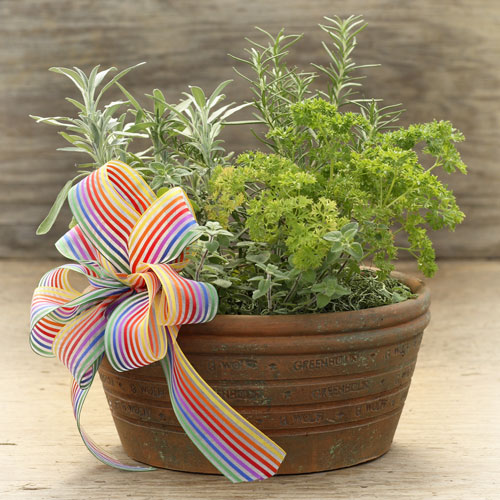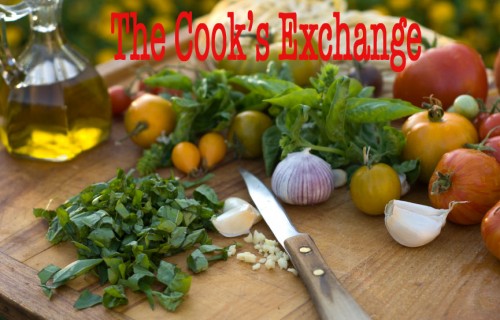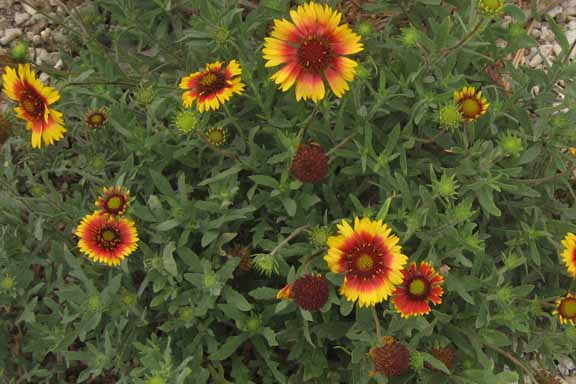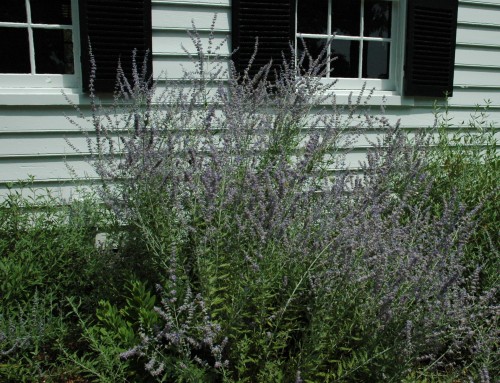by Briscoe White | Aug 31, 2010 | Growing, Herbs |

This fall we have decided to add forty new herbs to our list. Some are new and some we have only grown for spring in the past, but now are offering in fall for window sill gardening and those in the Deep South who have little fear of freezing temperatures.
A South or West facing window with no obstructions to the sun offer the best opportunity. One of the hardest herbs to give up each fall is Basil. After enjoying fresh Basil all summer, many gardeners will preserve some by freezing. This allows one to continue making Pesto throughout the colder months, but is not quite as good as using fresh leaves. Why not keep an indoor Basil for picking and save the other for winter’s harsher months when Basil just will not grow fast enough to pick.
Italian oregano and Parsley are two good choices for indoor growing. They do not mind cooler temperatures and will continue to grow as long as they receive enough sunlight. These herb plants fit nicely in pots and so can occupy a sunny window sill easily.
Using a six inch pot, plant your indoor garden before the long days of late summer are over. This will allow the plants to grow enough to allow cutting later. During the short days of winter, the plants will not be able to grow fast enough to cut often. By planting early, you are basically growing while the growing is good and later maintaining the plants through winter. Unless one has very powerful grow lights, the plants will not be able to cut foliage until spring. In effect this method is storing fresh herbs “ on the hoof” for winter harvest.
By the end of winter the plants will be cut down with little foliage, but they will also begin regrowth as days begin to lengthen in early spring, giving an early crop long before outdoor herbs begin their spring growth. It may not be possible to enjoy limitless fresh cut herbs from indoor plants, but used sparingly will help fight cabin fever by providing flavor for special meals.
by Briscoe White | Aug 23, 2010 | Exploring, Recipes |

Over the years, we have collected so many delicious recipes that highlight fresh, culinary herbs – we finally had an ‘lightbulb’ moment recently, and decided that an ‘Exchange’ is just that – we need to start sharing! We grow so many wonderful culinary herbs, and the next step is making suggestions on how to use them in the kitchen.
So, beginning now, we are introducing The Cook’s Exchange – a place where we share with you the bounty of both the garden, as well as the kitchen. We’ll start simple – we are simple cooks and the easier the better. As long as the recipe features the fresh, delicious flavor of what our garden has to offer. It’s summer, the herb garden is producing well, and the vines are covered with cucumbers – our favorite – Burpless! All you need are fresh herbs, fresh cucs and some delicious whole grain bread:
Ingredients:
8 ounces Light Cream Cheese
1 1/2 Tlb. Low Fat Milk
2 scallions, thinly sliced ( you can sub 3 Tlb. finely chopped red onion)
2 Tlb. minced parsley
1 Tsp. minced dill
1 Tsp. minced thyme
1 Tsp. minced basil
Fresh pepper
Salt
8 Slices Whole Grain Bread
1 Cucumber, thinly sliced
Preparation:
In a bowl, mix the cream cheese and milk together with a fork, and mix until well blended. Stir in all of the herbs, salt and pepper. Cover and allow the mixture to meld – put in the icebox for at least an hour.
Spread the mixture on both sides of bread, top with cucumber slices and enjoy!
Makes 4 Sandwiches.
by Briscoe White | Aug 12, 2010 | Flowers, Growing |

Of all the beach flowers, Gaillardia is the only one that is there by choice. In yards which are irrigated, Oleander, Rudbeckia, and Rosemary grow well. But how many volunteers do you see growing out in the dunes? My late summer visit to the NC beach found the dunes blanketed in Blanket Flower. No individuals were large bunched plants like their kin growing with a gardeners care and regular water. All the little Gaillardia plants were single stem with a flower or two per plant. They made up for individual size by shear numbers. The vacant lot next to the walk over the dunes was completely filled as if sown on purpose. With little or no competition, Gaillardia grew freely from seed.
Gaillardia in a garden setting is expected to perform with more color than the wild cousins are capable of as individuals. Sharing their tolerance for hot, dry locations, cultivars of Gaillardia such as “ArizonaSun” give the hardiness of the wild species and more flowers and much better plant habits. Ariziona Sun grow to only 12” hiigh and a nice 15” spread. It will flower from mid-summer to fall.
If looking for a flowering plant for a beach garden, Gailadia in a native which cannot be overlooked. Choose cultivars for any planted beds. Any wild areas can be seeded by collecting from wild pants.
by Briscoe White | Aug 9, 2010 | Growing, Herbs |
 We have just returned from family vacation at the beach. The beautiful NC coastline is only a memory until next time! While visiting various beach houses, I was always looking for plants that thrive near the beach. The plant that that I admired the most grew over the retaining wall along the driveway of our rental house. Hanging four to five feet over the wall were several creeping rosemary plants.
We have just returned from family vacation at the beach. The beautiful NC coastline is only a memory until next time! While visiting various beach houses, I was always looking for plants that thrive near the beach. The plant that that I admired the most grew over the retaining wall along the driveway of our rental house. Hanging four to five feet over the wall were several creeping rosemary plants.
These full grown specimens were not only full of deep green foliage, they were in full flower. Small pale blue flowers graced the long arching limbs of dark green foliage. These beautiful specimens grew strong and were obviously long lived. To have such plants at the beach, irrigation is a must. If looking for an evergreen shrub for a beach yard, Rosemary plants have proven themselves to me! Upright varieties make excellent shrubs and creeping types can be used as a ground cover or a cascading plant to soften a wall. Bottom line is Rosemary works well in coastal plantings, and being an herb plant as well as a shrub, many uses can be found for cooking with the clippings.
by Briscoe White | Jun 29, 2010 | Flowers, Growing |

That is the best description for Perovskia, or Russian Sage, when it is in bloom. The hardy ( Zones 5-9) perennial will give years of low maintenance, long summer blooms. Blue panicles create a lavender – blue mist which gets more intense as the flowers open. I like to use this plant as a specimen, mass planting to create a large stand. These beds are easy to maintain and offer color for much of the summer. Each plant grows 3-5′ tall with a 2-4′ spread; planting 2-3 feet apart, they will grow together as a large shrubby mass. They are also live many years, and are tolerant of poor soil. The planting outside of my late father in law’s office has been blooming for over 15 years with little to no attention.
The leaves are finely cut with a distinct blue- green color, which contrast beautifully with the blue mist of the flowers. As mentioned, Perovskia makes a great specimen plant, but also blends well into a mixed perennial bed. If more is desired, the blue mist can be accentuated with plantings of Rudbeckia. Maintenance is as simple as a late winter pruning of all stems to 6″. Where the growing season allows, deadheading will result in reblooms. Having no serious pest from the insect or disease world, it is a perfect perennial for beginner and experienced gardeners. Being so easy to grow in full sun, the challenge is making the most of the Blue Mist.




 We have just returned from family vacation at the beach. The beautiful NC coastline is only a memory until next time! While visiting various beach houses, I was always looking for plants that thrive near the beach. The plant that that I admired the most grew over the retaining wall along the driveway of our rental house. Hanging four to five feet over the wall were several
We have just returned from family vacation at the beach. The beautiful NC coastline is only a memory until next time! While visiting various beach houses, I was always looking for plants that thrive near the beach. The plant that that I admired the most grew over the retaining wall along the driveway of our rental house. Hanging four to five feet over the wall were several 